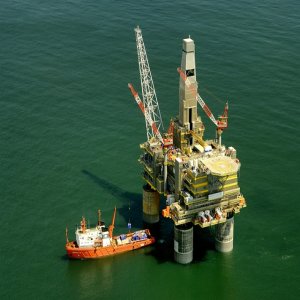
Will PEMEX Count the Cost of Mexico’s OPEC Victory?
 By Peter Appleby | Journalist and Industry Analyst -
Tue, 04/21/2020 - 17:18
By Peter Appleby | Journalist and Industry Analyst -
Tue, 04/21/2020 - 17:18
On Monday, the Mexican oil crude basket followed on the heels of WTI and plummeted into negative pricing for the first time in its history. At the end of trading, Mexico’s barrel sat at -US$2.37 per barrel.
The causes of the price rout are now well discussed. The COVID-19 pandemic that provoked a global shutdown brought demand destruction to an industry already grappling with a deluge of oil which began to flow as the two major oil producing nations, Saudi Arabia and Russia, locked horns in a price war.
The OPEC+ meeting that was intended to stop the hastening decline of oil prices achieved a historic 9.7MMb/d production cut agreement - 10 percent of daily global demand - but could not reach the volume nor the speed of cuts that the market was looking for. With the IEA estimating April’s demand to be 29MMb/d lower than this time last year from an average daily global demand of around 100MMb/d, the inadequacy of the OPEC+ agreement becomes clear. Finally, with global oil storage becoming saturated, traders who had purchased oil in May via futures contracts, which were due to expire on Tuesday, were desperate to avoid having to receive it.
Now, PEMEX is effectively paying US$2.37 for every barrel taken off their hands.
Despite the fact that prices are expected to bounce back, the severity of this price cash, which many traders are saying they have never experienced before in their lifetimes, has raised questions about how Mexico’s state-owned company, PEMEX, can sustain itself in these conditions. Though backed by the Mexican government, the NOC is heavily indebted and fiscally weak, having endured a series of downgrades by the world’s major credit rating agencies during the last few months.
More specifically, questions have been raised once more about PEMEX's management. While other companies reduced their production in the face of spiraling oil prices, Mexico held firm, rebuffing OPEC+’s request to cut output by 400Mb/d and agreeing only to a 100Mb/d reduction for May and June. On April 15, as experts became increasingly frantic in their warnings about global storage maximums soon being reached, PEMEX Director Octavio Romero told journalists that “our capacity is around 11MMb of crude. Today, we are at half that capacity.”
But negative pricing seems to have changed the picture. The 3MMboe that Bloomberg says is being stored in ships off the Mexican coast and the government’s decision to shut-in newly drilled PEMEX wells, suggests that the company’s storage is quickly running out. Recent decisions to reduce crude exports by 33 percent, intended not to “waste” the country’s oil while prices were depressed and to increase in-country refining by 400Mb/d will be adding further pressure to the company’s storage network.
Meanwhile, the private sector is busy building extra storage capacity for hydrocarbon products in Mexico. Speaking about his company’s massive 470Mboe expansion of its storage terminal in Veracruz, Christhian Pérez, Vopak’s Managing Director in Mexico said: “We believe the country’s need for infrastructure is in line with our investment decisions.” A Mexican firm, Hydrocarbon Storage Terminal, is putting the finishing touches to its 600Mboe storage terminal in Acolman, State of Mexico. Clearly, the market for storage is ripe.
Could the OPEC+ meeting, at the time claimed as a victory for Mexico's national government, now be viewed as a mistake?
The reasons for Mexico resisting the OPEC+ cut demand play into the political vision of the President Andrés Manuel López Obrador administration, which has promised to return PEMEX to its former glory by doubling Mexico’s oil production. Cutting PEMEX’s production would not help achieve these goals.
However, Welligence Energy Analytics says that Mexico’s bold refusal spurned the perfect opportunity for PEMEX to reduce unprofitable production on unviable fields and for the government, therefore, to save face. In 2019, PEMEX’s average per barrel production price was US$14.02, well below the 2019’s average trading price of Mexico’s export basket. According to Welligence, PEMEX still lost US$20 billion in 2019 when Brent oil was at US$60 per barrel. When Brent is placed at US$35 per barrel, 80 percent of PEMEX’s fields begin to lose money, says the consultancy. Brent has been placed below US$35 for the last month.
Many commentators pointed out that Mexico’s position was also backed by its sovereign hedging strategy that has protected the country during downturns over the last 20 years and has helped shield Mexico from the losses seen in other countries, including the demolition of the US’ shale industry. The hedging strategy is a state secret and estimations are not exact, but most analysts believe the billion-dollar insurance scheme hedges Mexico’s barrel price at US$49. If this holds true, Mexico could be set to receive around US$6 billion in 2020, says Bloomberg. So successful has this hedging strategy been that other national governments are now considering the option to protect themselves from future volatility. PEMEX’s own hedging scheme is miniscule in comparison. It provides only moderate protection against price volatility and will deliver just US$313 million to PEMEX this year, Romero explained last week.
PEMEX’s weak financial position and reliance on state support is well-known. According to Quartz, hundreds of PEMEX employees have not been paid for months, nor have they received benefits like health insurance. Today, the government formalized its decision to bring PEMEX’s profit-sharing rate (DUC) cut forward to free up to MX$65 billion (US$2.67 billion) for the company. Despite this, the federal government has refused to rule out suspending or cancelling the Dos Bocas refinery build. The US$8 billion refinery is being built while the rest of the National Refinery System functions well below half capacity.
Though oil’s negative pricing is likely to be temporary, the susceptibility of PEMEX and Mexico’s oil and gas industry to global volatility is not.















